Top 10 Best Castles in NORTH WALES!
North Wales has one of the highest densities of medieval castles in the world. Many of these fortresses were built during the late 13th century, especially under the reign of Edward I.
The region’s castles feature UNESCO World Heritage Sites, well-preserved towers, and dramatic coastal locations. This list covers ten of the most interesting castles in North Wales, including useful visitor details, historical facts, and nearby attractions.
1. Conwy Castle
Conwy Castle is one of the best-preserved medieval fortresses in Europe. Built by Edward I between 1283 and 1287, it was part of his campaign to conquer Wales. The castle features eight towers and a high curtain wall overlooking the Conwy Estuary.
The site forms part of the “Castles and Town Walls of King Edward in Gwynedd” UNESCO World Heritage Site. Visitors can walk along the castle’s original battlements and access most of its towers, offering views of Snowdonia and the surrounding town walls.
Did You Know?
Conwy Castle’s town walls stretch for over 1.2 kilometres and remain almost entirely intact. You can walk the full length for free.
Key Visitor Information (July 2025):
Managed by: Cadw
Opening times: Daily 9:30am – 5:00pm (last entry 4:00pm)
Admission: £12.00 adults, £8.60 concessions, £39.10 family ticket
Facilities: Toilets, gift shop, no on-site café
Dogs: Not allowed inside the castle; allowed on town walls
Directions: Signposted from A55, parking available in nearby pay-and-display car parks
Nearby Attractions:
Conwy Town Walls (free access)
Smallest House in Great Britain (3-minute walk)
Bodlondeb Woods Local Nature Reserve (10-minute walk)
Practical Tips:
Arrive early during summer to avoid queues
Bring waterproof clothing, exposed towers have no shelter
Combine with a walk around the harbour for a half-day visit
Architecture Today
2. Caernarfon Castle
Caernarfon Castle was constructed by Edward I from 1283 as part of his campaign to control Gwynedd. Its polygonal towers and coloured stone bands were designed to resemble the walls of Constantinople, symbolising imperial authority. The castle was also the birthplace of the first English Prince of Wales in 1284.
It is part of the same UNESCO World Heritage listing as Conwy and remains one of the most famous castles in Wales. Visitors can explore its extensive curtain walls, towers, and inner ward, with interactive exhibitions inside.
Did You Know?
Caernarfon Castle was used for the investiture of Prince Charles as Prince of Wales in 1969.
Key Visitor Information (July 2025):
Managed by: Cadw
Opening times: Daily 9:30am – 5:00pm (last entry 4:00pm)
Admission: £12.00 adults, £8.60 concessions, £39.10 family ticket
Facilities: Toilets, gift shop, small café nearby
Dogs: Not permitted within the castle grounds
Directions: Accessible from A487, parking in town centre pay-and-display areas
Nearby Attractions:
Royal Welch Fusiliers Museum (inside the castle)
Caernarfon Harbour and Promenade (5-minute walk)
Segontium Roman Fort (15-minute walk)
Practical Tips:
Wear sturdy footwear, spiral staircases are narrow and uneven
Consider the combined ticket with nearby castles if visiting several Cadw sites
Arrive before noon during summer months to avoid the busiest period
3. Harlech Castle
Harlech Castle was built between 1283 and 1289 during Edward I’s conquest of Wales. It occupies a rocky outcrop overlooking the Irish Sea, with panoramic views of Snowdonia National Park. Harlech’s design follows the concentric “walls within walls” principle, offering multiple layers of defence.
The castle was famously besieged during the Wars of the Roses and inspired the song “Men of Harlech.” It is a UNESCO World Heritage Site and remains a prominent example of military architecture.
Did You Know?
Harlech Castle’s original sea gate allowed ships to bring supplies directly into the inner ward during sieges.
Key Visitor Information (July 2025):
Managed by: Cadw
Opening times: Daily 9:30am – 5:00pm (last entry 4:00pm)
Admission: £8.30 adults, £5.80 concessions, £28.20 family ticket
Facilities: Visitor centre, café, toilets, shop
Dogs: Not allowed inside castle; permitted in the café terrace area
Directions: Located off the A496, pay-and-display parking nearby
Nearby Attractions:
Harlech Beach (20-minute walk, Blue Flag award)
Royal St David’s Golf Club (5-minute walk)
Llechwedd Slate Caverns (30-minute drive)
Practical Tips:
Take the steep “Ffordd Pen Llech” road with caution, it is one of the steepest streets in the world
The café offers good views of the castle and sea
Allow 1.5 hours for the castle visit, longer if combining with a beach walk
4. Beaumaris Castle
Beaumaris Castle, on the Isle of Anglesey, is considered one of the most technically perfect castles in Britain. Construction began in 1295 under Edward I but was never completed due to funding problems. The castle features near-perfect symmetry, a wide moat, and a concentric design with inner and outer walls.
Despite its unfinished state, Beaumaris is a UNESCO World Heritage Site and offers extensive areas to explore, including massive gatehouses and lengthy corridors.
Did You Know?
Beaumaris Castle has no keep, its strength comes from its evenly spaced curtain walls and towers.
Key Visitor Information (July 2025):
Managed by: Cadw
Opening times: Daily 9:30am – 5:00pm (last entry 4:00pm)
Admission: £8.30 adults, £5.80 concessions, £28.20 family ticket
Facilities: Toilets, small gift shop, limited seating
Dogs: Allowed on lead throughout the site
Directions: Off the A545, parking in adjacent town car parks
Nearby Attractions:
Beaumaris Gaol (5-minute walk)
Beaumaris Pier and Sea Cruises (7-minute walk)
Penmon Priory and Lighthouse (15-minute drive)
Practical Tips:
Bring waterproof shoes, the moat area can be muddy after rain
Best combined with a half-day visit to Beaumaris town
Take advantage of dog-friendly access if travelling with pets
5. Dolwyddelan Castle
Dolwyddelan Castle is a smaller, lesser-known fortress built by Llywelyn the Great around 1210. Perched on a hilltop in Snowdonia National Park, it originally guarded a strategic route through the Lledr Valley. The castle was captured and modified by Edward I’s forces in 1283 but later fell into disrepair.
Today, Dolwyddelan offers a simple, peaceful visit with a restored tower and wide mountain views, making it a good stop for walkers and history enthusiasts.
Did You Know?
Dolwyddelan Castle was one of the last native Welsh castles built before the Edwardian conquest.
Key Visitor Information (July 2025):
Managed by: Cadw
Opening times: Daily 10:00am – 4:00pm
Admission: £4.80 adults, £3.40 concessions, £16.00 family ticket
Facilities: No on-site facilities; nearest toilets and cafés in Dolwyddelan village (1.2 miles)
Dogs: Allowed on lead throughout the site
Directions: Access via A470; small parking area at the footpath entrance
Nearby Attractions:
Moel Siabod hiking routes (5-minute drive)
Dolwyddelan village and church (20-minute walk)
Zip World Fforest (15-minute drive)
Practical Tips:
The castle involves a short but steep walk, sturdy shoes are recommended
No shelter on-site; check the weather before visiting
Combine with a scenic drive through Snowdonia for a full-day trip
6. Criccieth Castle
Criccieth Castle stands on a headland between two beaches, offering wide views over Cardigan Bay. It was originally built by Llywelyn the Great in the early 13th century and later expanded by Edward I after his conquest of North Wales. This mixture of Welsh and English construction styles is visible in the remaining walls and gatehouse.
Though partly ruined, Criccieth Castle is valued for its scenic location and historical significance, especially for those interested in both native Welsh and Edwardian history.
Did You Know?
During the Glyndŵr Rebellion in 1404, Criccieth Castle was captured by Welsh forces and later abandoned.
Key Visitor Information (July 2025):
Managed by: Cadw
Opening times: Daily 9:30am – 5:00pm (last entry 4:00pm)
Admission: £6.90 adults, £4.90 concessions, £23.00 family ticket
Facilities: Small visitor centre with toilets and shop; no café
Dogs: Allowed on leads throughout the castle
Directions: Access via A497, public parking in Criccieth town centre
Nearby Attractions:
Criccieth Beach (5-minute walk)
Lloyd George Museum (10-minute drive)
Black Rock Sands (15-minute drive)
Practical Tips:
Bring a camera, sunset views from the castle are popular
Limited shaded areas, bring sun protection in summer
Best combined with a town visit or coastal walk
7. Rhuddlan Castle
Rhuddlan Castle was built by Edward I from 1277 to secure the River Clwyd and enable supplies to reach English garrisons by water. Its diamond-shaped inner ward and twin-towered gatehouses demonstrate advanced military planning. The nearby river was canalised during construction to allow access for supply ships.
Though partially ruined, Rhuddlan remains a striking example of Edwardian design, set in landscaped grounds with river views.
Did You Know?
The Statute of Rhuddlan, which annexed Wales to the English crown in 1284, was issued from this castle.
Key Visitor Information (July 2025):
Managed by: Cadw
Opening times: Daily 9:30am – 5:00pm (last entry 4:00pm)
Admission: £6.90 adults, £4.90 concessions, £23.00 family ticket
Facilities: Toilets, small shop, no café
Dogs: Allowed on leads
Directions: Off A525, parking in nearby public car parks
Nearby Attractions:
Rhuddlan Nature Reserve (10-minute walk)
St Mary’s Church, Rhuddlan (5-minute walk)
Bodelwyddan Castle and Park (15-minute drive)
Practical Tips:
Picnic areas available in the castle grounds
Little shade on-site, sun hat advisable in summer
Less busy than other Edwardian castles, ideal for quieter visits
8. Denbigh Castle
Denbigh Castle was constructed in the late 13th century following Edward I’s conquest of North Wales. The castle is known for its dramatic triple-towered gatehouse and extensive curtain walls. Though damaged during the English Civil War, large sections remain, including the impressive main entrance.
Surrounding the castle are the remains of the original town walls, creating an atmospheric site with a mixture of ruins and well-preserved sections.
Did You Know?
Denbigh Castle’s town walls originally enclosed 9 towers and 2 gatehouses, designed to house English settlers.
Key Visitor Information (July 2025):
Managed by: Cadw
Opening times: Daily 10:00am – 4:00pm
Admission: £5.90 adults, £4.20 concessions, £20.30 family ticket
Facilities: Toilets, small shop, no café
Dogs: Allowed on lead
Directions: Follow signs from A543; on-street and car park options nearby
Nearby Attractions:
Denbigh Town Walls (free access)
Cae Dai 1950s Museum (10-minute drive)
Moel Famau Country Park (25-minute drive)
Practical Tips:
The site involves some uphill walking, wear suitable footwear
Combine with a town wall walk for a full visit
Usually quiet, good for those avoiding crowds
9. Flint Castle
Flint Castle was the first stronghold built by Edward I during his invasion of Wales, begun in 1277. It features a unique detached round tower, inspired by continental designs. Positioned on the Dee Estuary, it was intended to be resupplied by sea.
Although largely ruined, visitors can access the inner ward and enjoy wide estuary views, with information panels explaining the castle’s history.
Did You Know?
Richard II was held at Flint Castle in 1399 before being taken to London, a key event in Shakespeare’s play Richard II.
Key Visitor Information (July 2025):
Managed by: Cadw
Opening times: Open daily, free access (unmanned site)
Admission: Free
Facilities: None on-site; public toilets in Flint town (5-minute walk)
Dogs: Allowed on leads
Directions: Easy access from A548, free parking next to the castle
Nearby Attractions:
Flint Foreshore Walk (direct access)
Greenfield Valley Heritage Park (10-minute drive)
Wepre Park (15-minute drive)
Practical Tips:
Bring your own refreshments, no facilities on site
Flat site with grass areas, suitable for picnics
Combine with a coastal walk for a relaxed visit
10. Castell y Bere
Castell y Bere was built by Llywelyn the Great around 1221 to control the Dysynni Valley in southern Snowdonia. Unlike the English-built castles on this list, Castell y Bere represents native Welsh defensive architecture, with a long narrow layout adapted to the rocky ridge.
The castle was abandoned after Edward I’s conquest, leaving dramatic ruins in a peaceful valley setting. The site is popular with walkers seeking a quiet, historical destination away from crowds.
Did You Know?
Castell y Bere is the largest castle built by the native Princes of Gwynedd, reflecting their efforts to defend western territories.
Key Visitor Information (July 2025):
Managed by: Cadw
Opening times: Open daily, free access
Admission: Free
Facilities: None on-site; nearest facilities in Abergynolwyn village (3 miles)
Dogs: Allowed on lead
Directions: Signposted from A493 near Llanfihangel-y-pennant, small free parking area available
Nearby Attractions:
Talyllyn Railway (5-minute drive)
Craig yr Aderyn (Bird Rock) nature reserve (15-minute drive)
Dolgoch Falls (20-minute drive)
Practical Tips:
Wear hiking shoes, site accessed by short uphill walk
No toilets, plan ahead if visiting with children
Combine with nearby natural sites for a full day outdoors
Wrapping it Up
North Wales offers a wide range of castles, from the grand stone fortresses of Edward I to the more remote remains of native Welsh princes. Whether you are interested in military architecture, scenic walking routes, or medieval history, these ten castles provide a varied and accessible way to experience the region’s heritage.
For the best experience:
Plan visits around opening hours, especially for Cadw-managed sites.
Combine multiple nearby sites into single-day trips.
Take advantage of free access locations like Castell y Bere and Flint Castle for flexible outings.
Check dog policies in advance if visiting with pets.
Source
Conwy Castle
A well-preserved fortress with eight towers and complete town walls, part of a UNESCO World Heritage Site.
https://cadw.gov.wales/visit/places-to-visit/conwy-castleCaernarfon Castle
Famous for its polygonal towers and historical links to the Prince of Wales, also UNESCO listed.
https://cadw.gov.wales/visit/places-to-visit/caernarfon-castleHarlech Castle
Coastal stronghold with sea gate access and views over Snowdonia, part of the UNESCO group.
https://cadw.gov.wales/visit/places-to-visit/harlech-castleBeaumaris Castle
Technically perfect concentric design with a wide moat, despite being unfinished.
https://cadw.gov.wales/visit/places-to-visit/beaumaris-castleDolwyddelan Castle
A scenic native Welsh castle built by Llywelyn the Great, set in Snowdonia National Park.
https://cadw.gov.wales/visit/places-to-visit/dolwyddelan-castleCriccieth Castle
A coastal ruin blending Welsh and Edwardian construction styles, overlooking two beaches.
https://cadw.gov.wales/visit/places-to-visit/criccieth-castleRhuddlan Castle
Riverside castle with diamond-shaped layout, linked to the 1284 Statute of Rhuddlan.
https://cadw.gov.wales/visit/places-to-visit/rhuddlan-castleDenbigh Castle
Notable for its huge triple-towered gatehouse and surviving town walls above Denbigh town.
https://cadw.gov.wales/visit/places-to-visit/denbigh-castleFlint Castle
The first of Edward I’s Iron Ring, featuring a detached round tower on the Dee Estuary.
https://cadw.gov.wales/visit/places-to-visit/flint-castleCastell y Bere
A remote and peaceful native Welsh fortress built by Llywelyn the Great, free to visit.
https://cadw.gov.wales/visit/places-to-visit/castell-y-bere


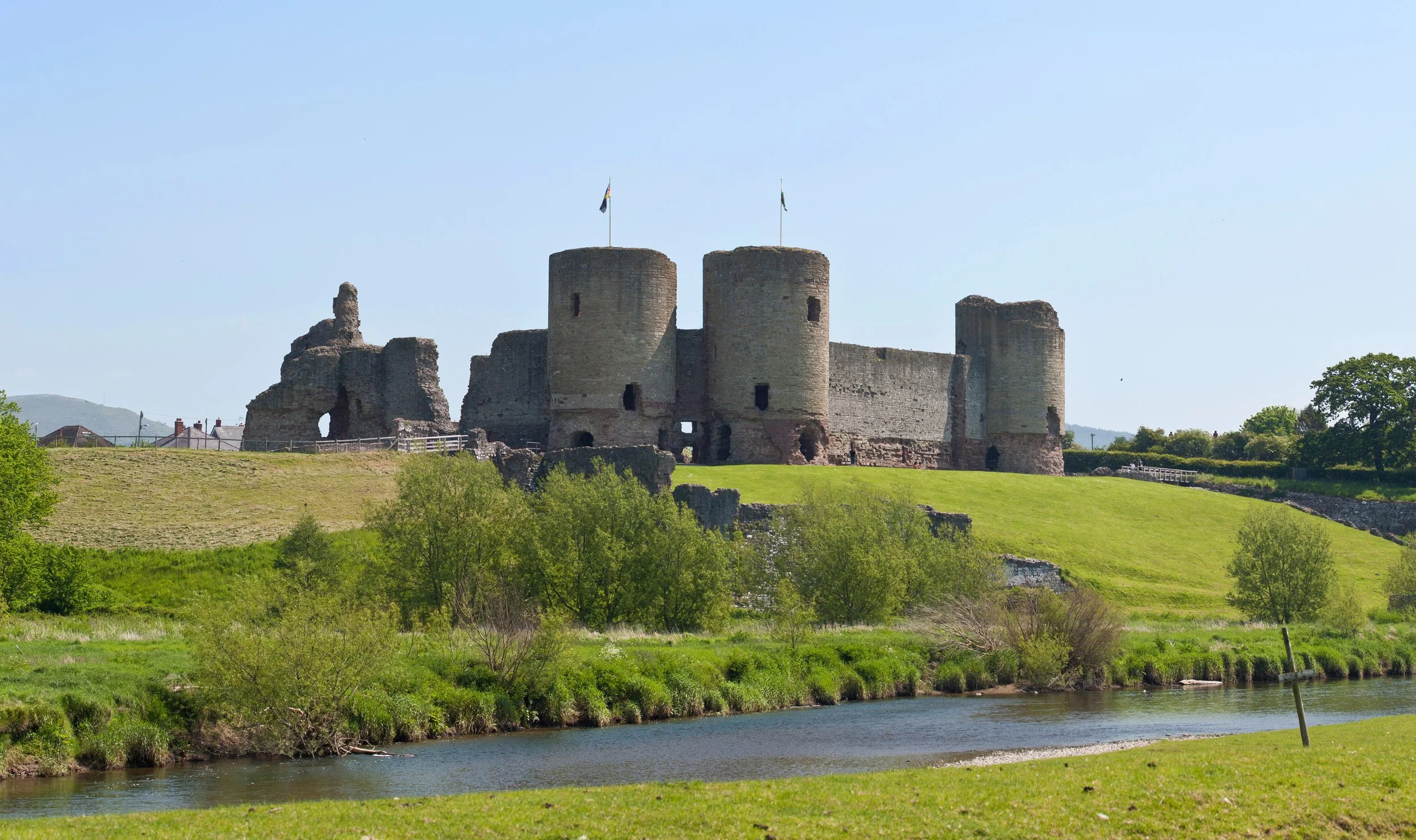

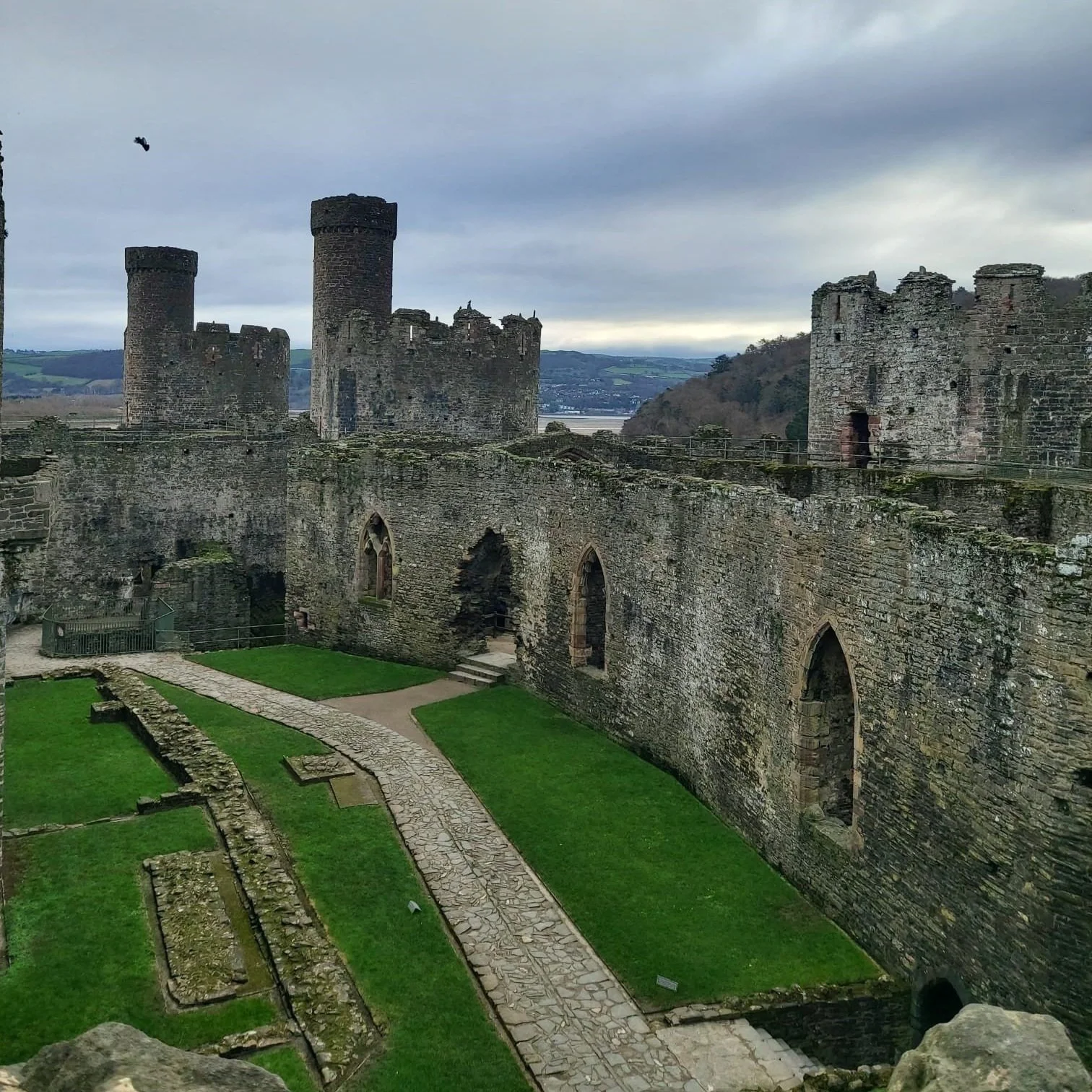
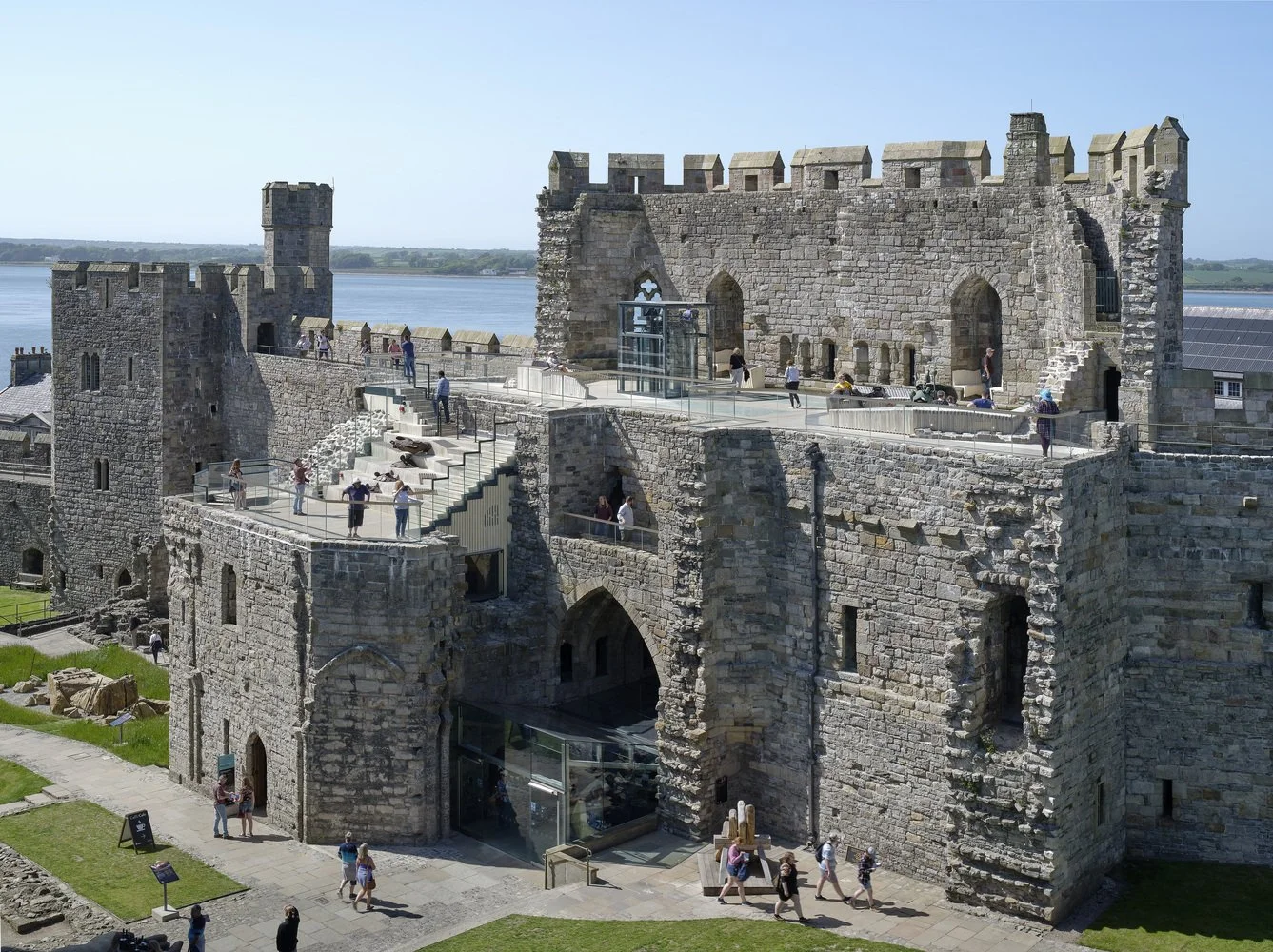
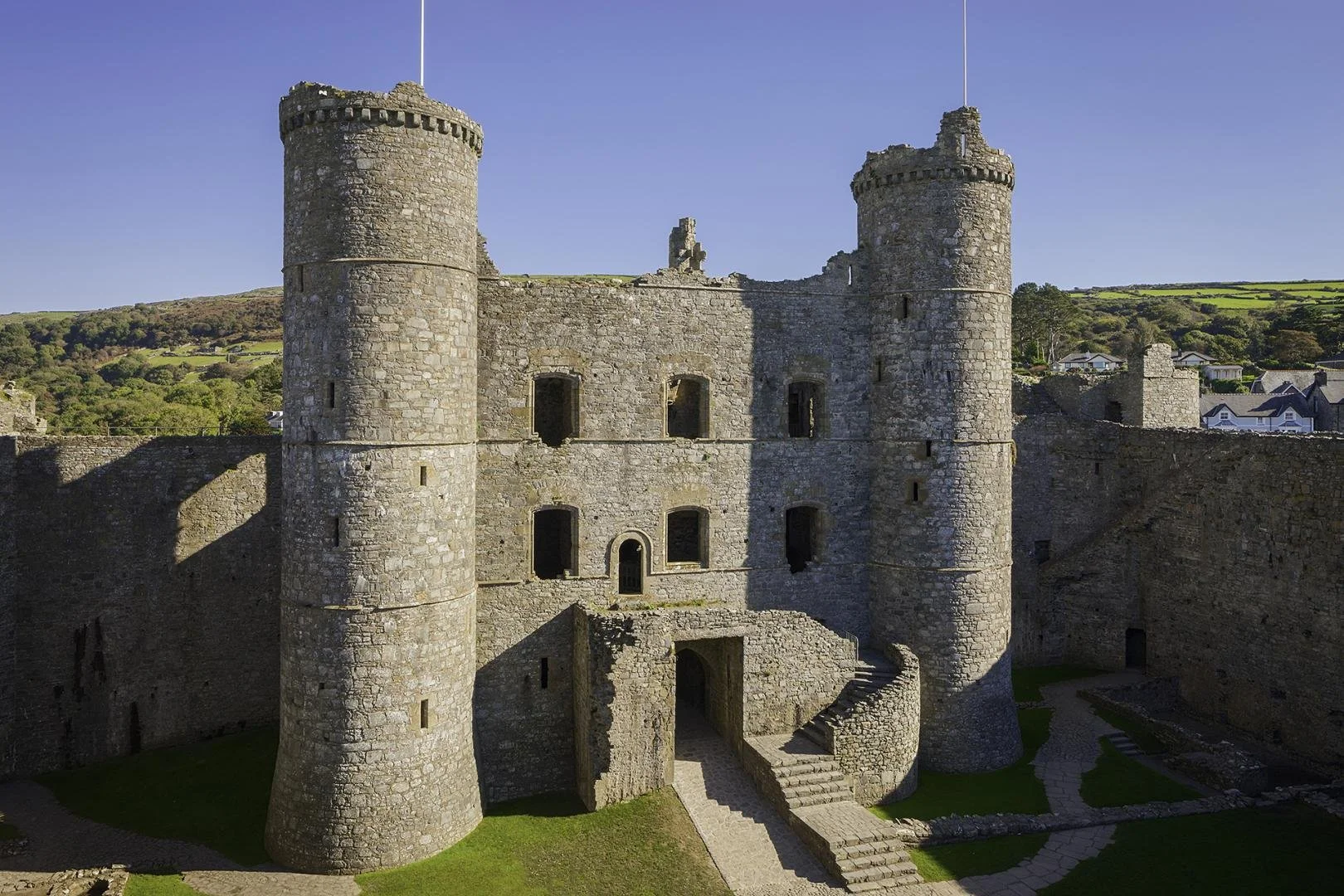

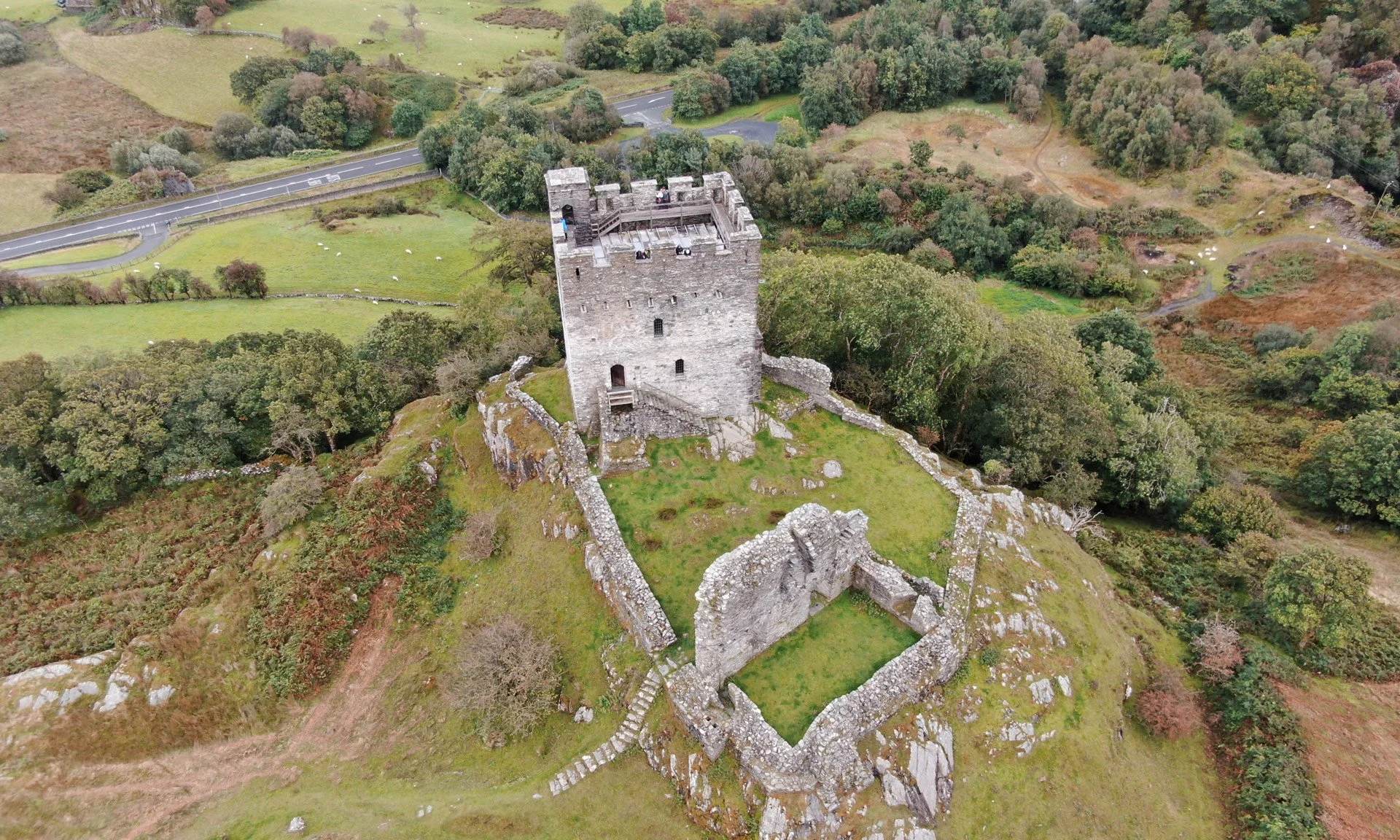


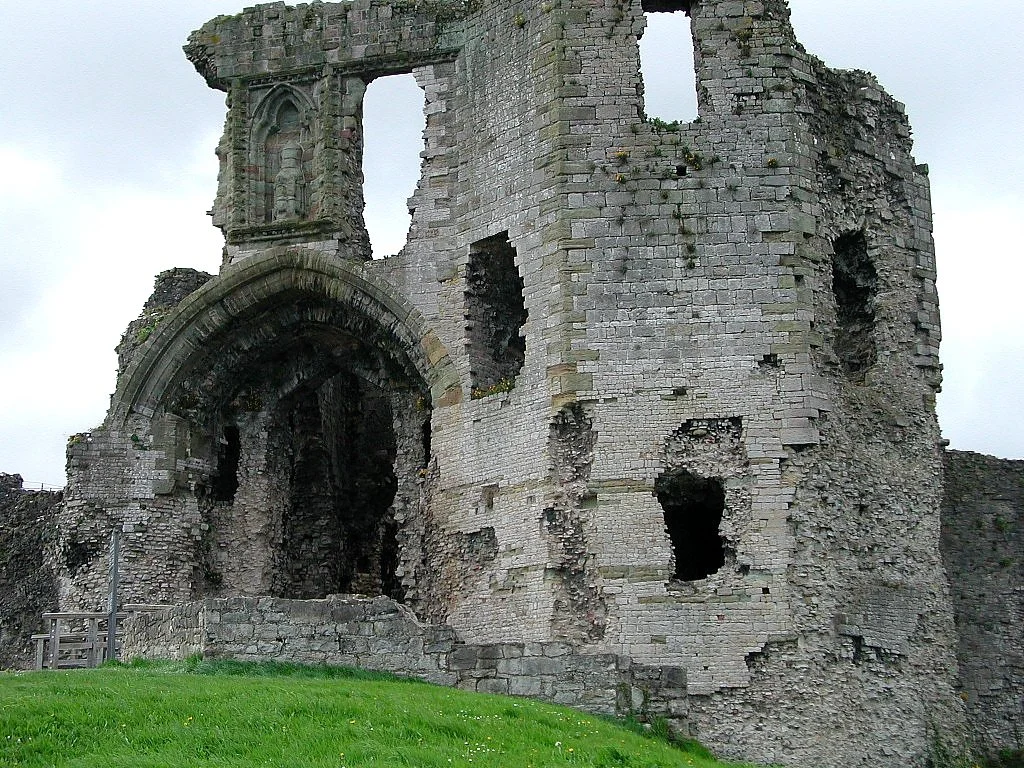
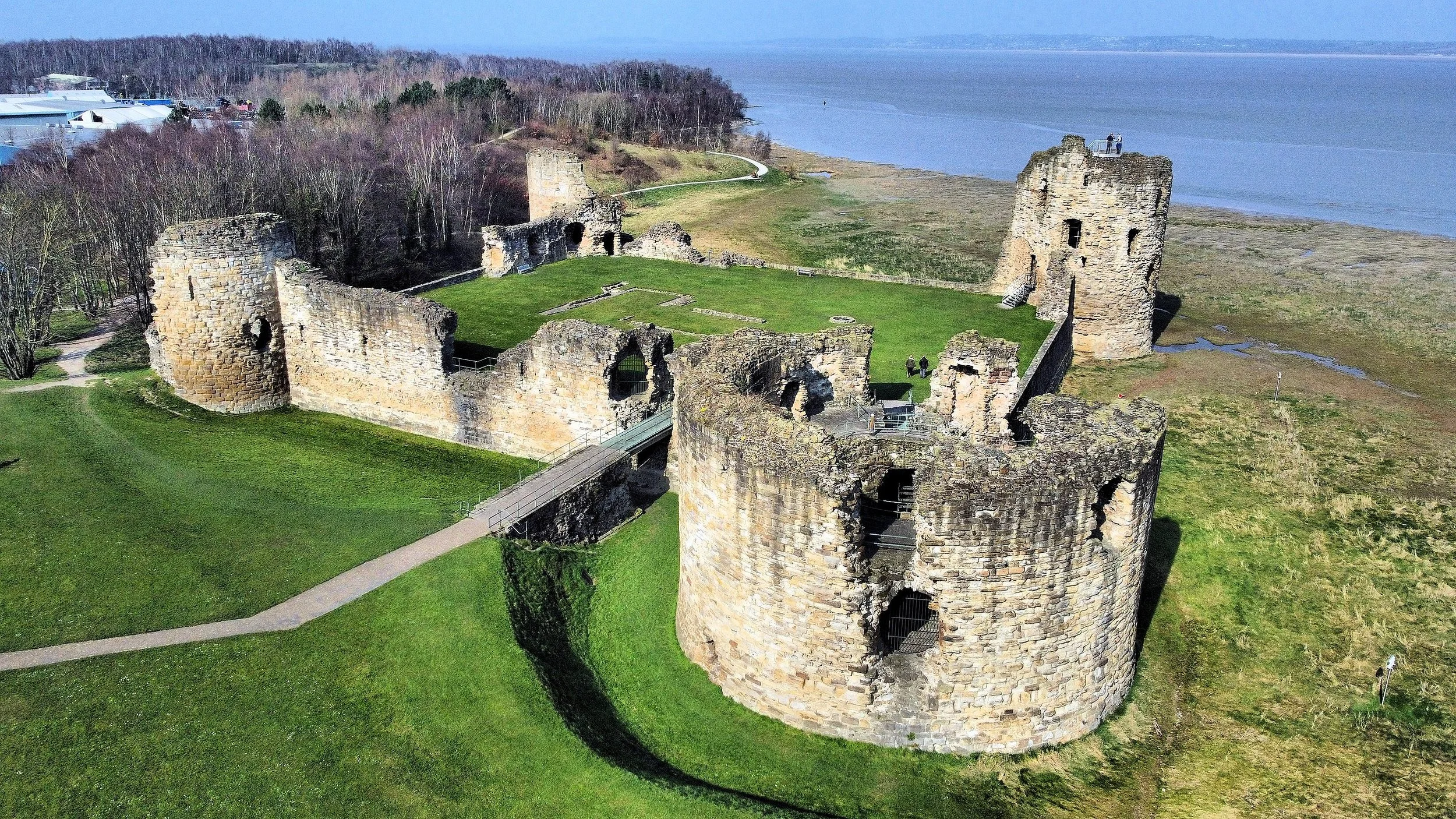


North Wales has one of the highest densities of medieval castles in the world.